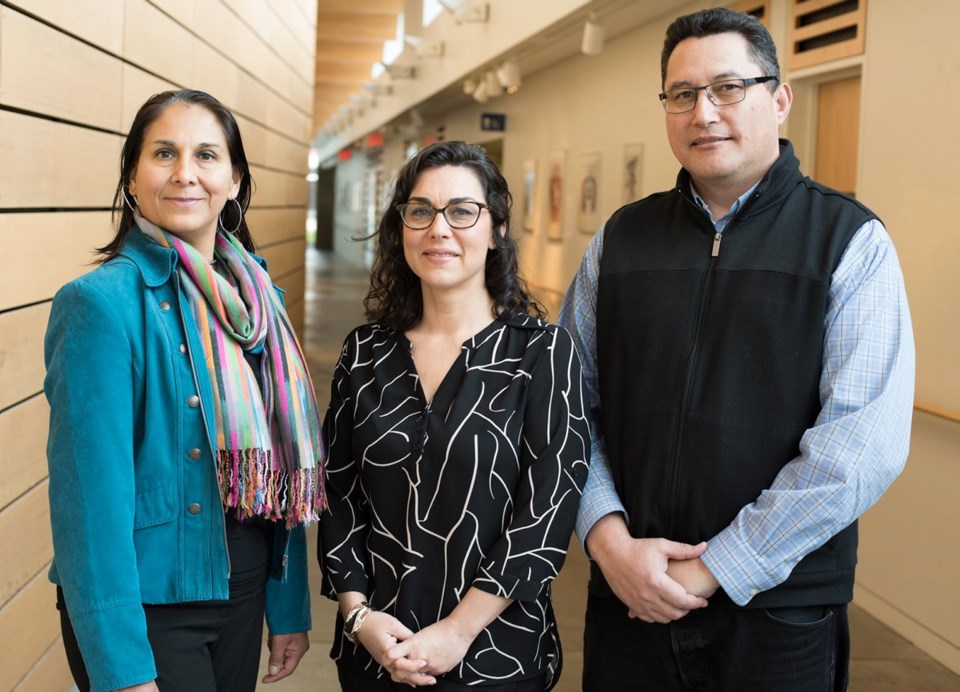Including First Nations languages in public schools would be an easy but enormous step forward in the Truth and Reconciliation process, says a University of Victoria Indigenous scholar and co-author of a new book.
“It’s not far-fetched,” said Onowa McIvor, a Cree woman raised in Saskatchewan. She traces her family roots to Manitoba and is an assistant professor at the university.
“We would just like to see it more widespread,” McIvor said. “We could get there very quickly.”
She, along with two other Indigenous scholars in UVic’s education faculty, have co-authored the book Promising Practices in Indigenous Teacher Education. Also contributing are Paul Whitinui, who is Maori, and Carmen Rodriguez de France, of the Kickapoo Nation of northeast Mexico.
Forty-seven other contributors add their perspectives on Indigenous scholarship from across Canada, New Zealand, Australia, the U.S. and Mexico.
The book reaches out to Indigenous communities, community leaders, educators and schools to prepare for a new way of teaching and thinking about First Nations cultures and languages.
McIvor, who works in the field of language revitalization, said all Canadians can start by recognizing they have a personal stake in First Nations languages.
“As Canadians, the Indigenous languages are part of our heritage,” she said. “If you call yourself Canadian, then that heritage belongs to you and you have a responsibility to protect and continue that heritage. All children in Canada should be learning Indigenous languages.”
McIvor said one of the most common objections to the idea is that Canada is home to at least 60 First Nations languages. How can so many be taught?
She said that’s an easy problem to overcome: Start by teaching a local First Nations language.
“Always respect and acknowledge the land you are on,” McIvor said. “Your starting place is always going to be the language of the land you are on.”
She said it’s already being done. Elementary school students in Prince Rupert are being introduced to Tsimshian and Haida is taught to children in Haida Gwaii.
McIvor said she wouldn’t expect every student to become fluent in a First Nations language. But just remembering a few local First Nations phrases and stories would go a long way toward establishing a renewed Canadian spirit, she said.
“Let’s acknowledge the land beneath our feet and not be intimidated,” she said. “There is some public education required, but that is part of truth and reconciliation. It’s about who we are as Canadians, who we want to be, and how are we going to come together and reconcile who we are as a country going forward.”



